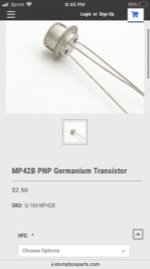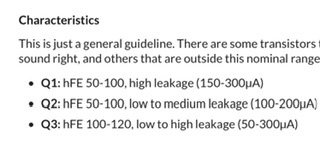I think for Q1 an Q2 they might work just fine. It's the Q3 one that needs to be a higher hFE for the whole thing to really work. I built a Maestro Fuzz Tone FZ-1 clone a week ago and used some AC128's I had laying around. Not much off from what a Tone Bender requires really. I acquired most of my Germaniums by hunting down various sets on eBay and other sites off the beaten path. Did get some from StompBoxParts...but you have to jump on them when they're listed else they get sold out really fast...especially the higher hFE ones!
Honestly, your best bet would be to find a place that can sell you a set that has been tested and has the right hFE and leakage values you need to make it really work well for you.
JoeDocMusic appears to have some sets. You can also find sets on Reverb a lot of times.
Another option, and one that I've used myself, is to find some on PedalHacker.com and use his testing service to get transistors that match the specs you're looking for. Unfortunately, many of the ones he has are Russian transistors which have a tendency to have pretty low leakage and might not work so well for a Tone Bender, which does need some leakage.
I'd say give JoeDocMusic a shot. Short of buying a buttload of transistors and testing them yourself, that might be your best bet.

 Hey all,
Hey all,